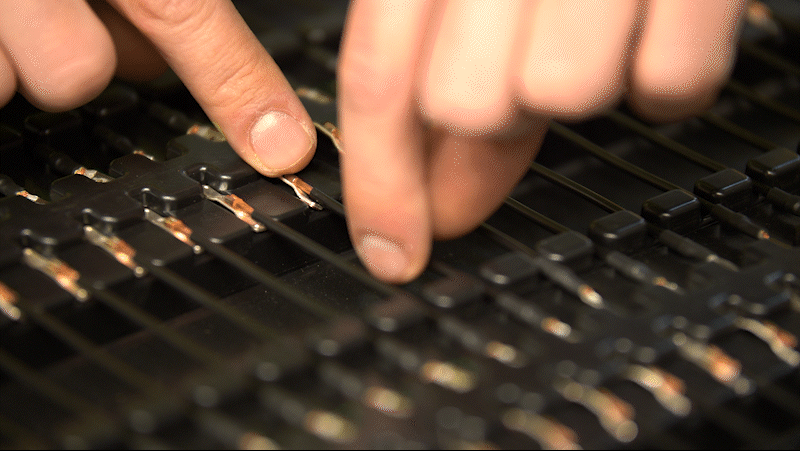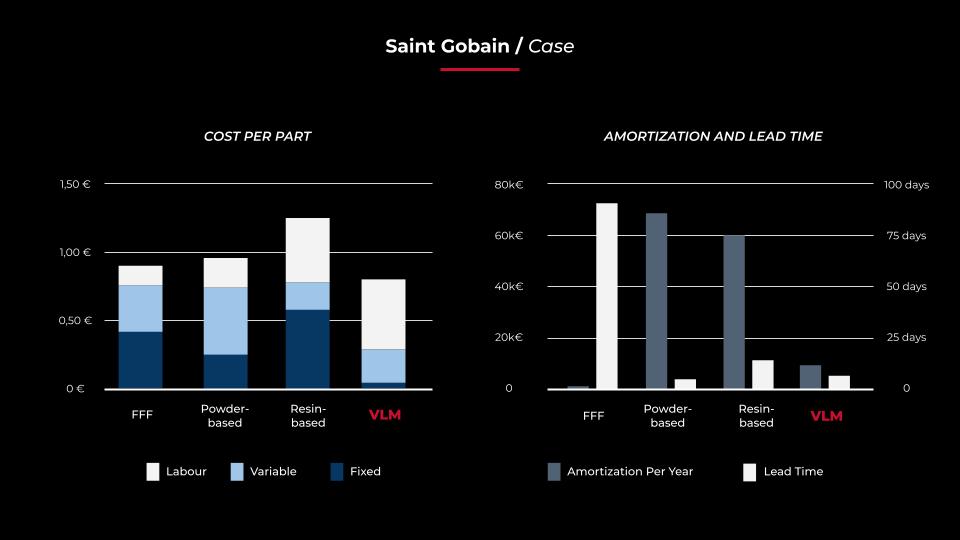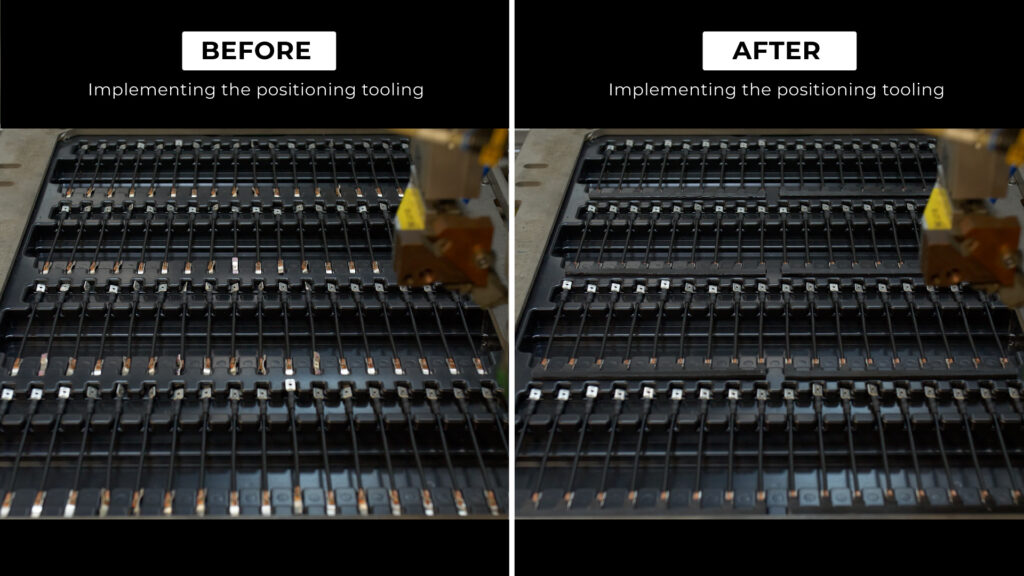Tier 1 automotive glass manufacturer Saint-Gobain evaluated its options for streamlining its production of large batches, and Viscous Lithography Manufacturing (VLM) technology won by a landslide. VLM has provided consistency for robotic processes implemented throughout its production line, increased its rate of efficiency, and drastically reduced costs. This breakthrough has resulted in an astonishing estimated annual saving of 70.000€.
Manufacturing front runner Saint-Gobain’s department Sekurit specializes in innovative glazing systems for the automotive industry. In its facilities in L’Arboç, Spain, efficiency is paramount in its giant production lines complete with both automated and manual processes. In just 7 days, VLM technology permitted the creation of 7000 units of a positioning fixture to take its rate of productivity even further and give rise to a tremendous estimated annual saving of 70.000€.
Getting to know Saint-Gobain
As soon as you step through the doors into Saint-Gobain’s facilities, it’s clear to see why this glass manufacturing giant is trusted by star clients such as Stellantis Group, Daimler Mercedes, Volkswagen Group, Renault Dacia, and Ford to supply 19 million Backlites and Sidelites per year. With 31 plants like these posted around the world, Saint-Gobain has been the leader in the sector for over 90 years.
Before 3D printing, Saint-Gobain Sekurit outsourced all parts to be mechanized by an external supplier; a costly process that couldn’t keep up with its restrictive time limit and fast-paced schedule for its components.
Constantly striving to better their production line, Sekurit incorporated 3D printing in 2019. In contrast to previous methods, FFF technology brought the ability to play with different designs, test their functionality straight away, and all still while at top quality with less budget. Tools, jigs and fixtures, and parts such as spare parts and prototypes all played a role in reducing the cost per part.

Room for improvement
The team was aware that there was still potential for growth when it came to large batch production, particularly in a stage where fast-moving robots pick up a cable to be welded onto backlite glazing for a defogging system.
There were issues with the orientation of the cables, which would then result in it being attached incorrectly and mean manual rework by operators. Since this was a clear loss of valuable time, the team set out to improve efficiency. They discovered the problem lay in the tray and that it could be solved by a positioning fixture with teeth to separate the cables and keep them in position. The team needed 7000 units of these fixtures – and fast!

Key considerations
They began to explore all avenues, taking into consideration the three main factors:
- Cost per part (including fixed, variable, and labor costs)
- Amortization (which could be considered as the entry barrier or initial required financial investment)
- Lead time
To produce this large batch with the resin and FFF printers implemented at the time would work in terms of cost, because of their simple operation and cheap material, but the production rate and subsequent lead time just wouldn’t cut it. Saint-Gobain would need to install an entire print farm with multiple printers in order to make this work.
While powder-based technology offers a competitive price, a short lead time of just 6 days, and cheap labor costs due to its automated workflow, its materials and consumables are more expensive. Ultimately, you need to have the funds available to shell out a huge initial investment, which is really not an option for businesses without a very clear 3D printing pipeline.
They then looked at the other alternative of commercial resins but found that it entails a much higher cost and triple the amount of lead time compared to powder-based technology.
VLM reigns supreme
That’s when, through discussions with BCN3D, the team came across the most suitable solution: VLM technology.

The cost per part with VLM is the lowest, accompanied by a lead time of just seven days to receive the 7000 unit batch. The low entry barrier of the equipment, big printing volume, and high throughput make VLM really stand out as the best option. While FFF is constrained to producing parts with just one or two tool heads at a time, VLM is only limited to the size of the available LCD screen, meaning that it could keep up with Saint-Gobain’s urgent lead times and the costs would remain low.
Compared to powder-based technology, VLM saves 85% of the initial investment, produces parts 17% cheaper, and only requires 1 extra day to produce the 7.000 unit batch. Compared to other resin-based technology, VLM requires 83% less initial investment, produces parts 37% cheaper and cuts lead time in half.
“By currently having this implemented in the production line, the efficiency has already increased by an estimated annual saving of 70.000€.” – Miguel Lascuevas, Tempering & Soldering Manager
What’s more, with such a wide range of processes equipped with robots to cover many applications, this development has everything it takes to be applied across a variety of other areas.

Thanks to VLM, Saint-Gobain is looking to the future through rose-colored glasses. With such a big improvement in such a short amount of time, the company hopes to continue to lessen its dependence on external mechanization suppliers and instead produce internally to reach manufacturing autonomy. Next to this, Saint-Gobain is striving for operational excellence, to empower its operators to propose, design, and implement solutions with their own tools.
“We’ll simply produce what we need, whenever we need it.” – Angel Salas, Maintenance Engineer
Saint-Gobain’s case is just the beginning of the possibilities with VLM. If you’re interested to see where this technology could take you, join our VLM Technology Adoption Program to:
- Be one of the first to discover the new VLM technology and see its full potential for yourself with real 3D printed parts
- Have a dedicated Additive Manufacturing applications engineer by your side to develop custom analysis and solutions
- Develop custom use cases for your company
